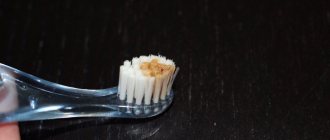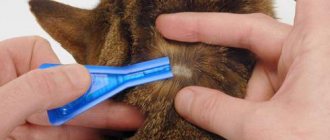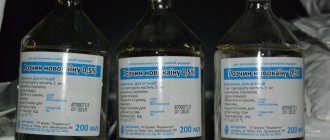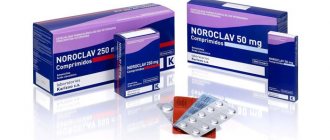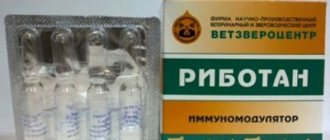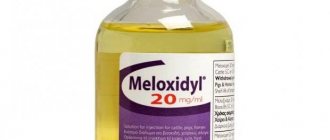Due to its versatility, the pharmaceutical drug “Levomekol” is actively used for cats. Many veterinarians give it preference, prescribing it to animals to heal wounds, suppuration and other damage to the epidermis. The correct use of the ointment is described in detail in the instructions, which you should definitely read before starting treatment.
Compound
The medicine is based on chloramphenicol, a broad-spectrum antibiotic. Resistance to it develops very slowly. Methyluracil, which is part of the composition, promotes tissue regeneration. The auxiliary substance polyethylene oxide helps deep penetration of the drug and speeds up the cleansing process.
Apply directly to or into the injury. Mainly used for the treatment of purulent formations: scratches, wounds, fistulas. After surgery, veterinarians recommend this medicine, as Staphylococcus aureus and white staphylococcus can be activated. Which constantly live on the body of cats.
If you have intolerance to chloramphenicol or allergic reactions to antibiotics have been noticed, use is contraindicated.
Types of dermatitis in cats
The concept of dermatitis covers ailments of various origins, the common feature of which is skin manifestations. Based on the nature of the symptoms, superficial, purulent and moist dermatitis are distinguished. Superficial is the mildest form of the disease, in which small rashes are noted on the skin. They itch and cause discomfort in the pet. Purulent manifests itself in the form of ulcers, scratching, and noticeable inflammation. With wet dermatitis, the skin seems to be torn off, there is weeping and ichor, and hair loss around the wound.
Based on their origin, veterinarians distinguish the following types of disease:
- simple dermatitis (as in the photo) - diagnosed when the skin is overly sensitive to external factors (irritation appears after scratching, wearing a collar, exposure to the sun, cold and other provocateurs);
- allergic nature (atopic) – develops when there is an allergy to food components;
- flea - noted when infected by blood-sucking insects that parasitize the animal’s body (irritation is provoked by flea saliva released during a bite);
- contact – noted when there is a negative skin reaction to shampoo, ointments, chemicals that the animal may encounter out of curiosity;
- bacterial – provoked by streptococci and other unfriendly bacteria;
- traumatic - is a consequence of damage to the skin as a result of a cut or bite from another animal.
For lichen
This is one of the most common “feline” diseases. Pityriasis rosea is most susceptible to the antimicrobial action of Levomekol. Do not forget that this medicine does not cure the disease, but helps with antimicrobial and antiparasitic agents. In combination with these drugs, it is possible to overcome harmful microorganisms in a short time. Therefore, Levomekol ointment for cats can be a salvation.
With lichen, severe itching occurs. The animal instinctively scratches the lesions. Given the presence of claws, this leads to the appearance of numerous wounds. In this case, levomekol ointment will help quickly restore the integrity of the skin. This will prevent re-infection, since there will be no penetration of infection inside.
Procedure for lichen:
- prepare a napkin (preferably sterile), you can use a bandage or gauze;
- squeeze out a small amount of ointment, the size of a pea. The volume can be changed depending on the area of the lesion;
- rub on the lichen spot;
- fixed with a bandage.
The dressings are changed every day until the symptoms disappear. It is worth noting that sometimes lichen is confused with symptoms of the presence of subcutaneous mites. If self-therapy with Levomekol does not help, you should consult a veterinarian. Maybe a specific remedy is not suitable, or the wrong diagnosis was made.
Treatment methods
After examining the cat with an otoscope and taking material from the ear, the veterinarian will prescribe preliminary treatment. It will be adjusted once the test results are received. The regimen and tactics of therapy will depend on the reasons that contributed to the onset of the inflammatory process.
If the disease is mild and the pet’s life is not in danger, then it is treated at home. In severe cases, when there are symptoms of intoxication or there is a risk of developing meningitis, it is better to leave the cat in a hospital under the supervision of a doctor.
Standard treatment includes:
- pain relief – most often this is an injection;
- cleaning the ear canals from pus and crusts;
- injection of medicinal drops into the sore ear;
- For purulent otitis, the cat is prescribed a course of antibiotic injections.
A sick pet must be provided with complete rest. It is kept in a warm, draft-free place.
Therapy tactics
Regardless of the cause of inflammation, treatment of otitis in a cat begins with eliminating the symptoms. If only the outer ear is affected, then the shell is wiped with a special lotion and lubricated with wound-healing ointment daily until complete recovery.
For otitis media, veterinarians prescribe anti-inflammatory drops and painkillers by injection. It is important to provide your cat with adequate nutrition. Vitamins are added to the food to support immunity.
For purulent otitis, veterinarians prescribe local broad-spectrum antibacterial drops with anti-inflammatory and analgesic effects, as well as vasoconstrictor drugs. They relieve swelling, so pus comes out of the ear freely.
Attention! To prevent the cat from scratching its ears, a protective collar is put on during treatment.
Surgical intervention is not necessary if the eardrum is perforated or if a tumor is found in the ear.
Specific treatment
After receiving the test results, the veterinarian may change the treatment regimen and tactics. From now on, medications will be selected taking into account the primary cause of ear inflammation:
- If ear mites are the cause of otitis, the cat will be prescribed acaricidal drops.
- If a fungal infection is detected, the doctor will recommend antifungal medications.
- If the disease occurs due to allergies, antihistamines will be included in the treatment regimen.
- If there is a hormonal imbalance that leads to inflammation in the ears, it is recommended to take corticosteroids.
- To treat otitis media complicated by a bacterial infection, the doctor will prescribe antibiotic injections plus antimicrobial drops.
Medicines for the treatment of otitis media
All types of otitis are treated comprehensively. The following groups of drugs are usually used in the treatment of ear diseases:
- hygienic lotions for cleaning sinks;
- antimicrobial solutions for external treatment;
- wound healing ointments;
- analgesic, vasoconstrictor, antifungal, acaricidal and antibacterial drops;
- complex action antibiotics in the form of injections;
- antihistamines.
Since the main reason for the development of otitis media is a weakened immune system, many veterinarians recommend including immunostimulating drugs in the treatment regimen.
Most often, for otitis media, the following drugs and medications are used:
- Antiseptics for external treatment - a solution of furatsilin, boric acid or hydrogen peroxide.
- Wound healing ointments with antimicrobial effect - Levomekol, Safroderm.
- Drops with analgesic and anti-inflammatory effects - Otipax and Otinum.
- Antimicrobial drops - Anandin, Polyseptin, Otibiovet, Otibiovin, Sofradex.
- Antifungal drugs - MykoStop.
- Drops for parasitic otitis – Decta and Amitrazine.
- Combined drugs for the treatment of complicated otitis, including parasitic ones - Otospectrin, Tresaderm, Otidez, Oritsin, Surolan.
- Antihistamines are used for otitis of an allergic nature - these are Cetirizine, Tavegil, Loratadine.
- For bacterial otitis, cats are prescribed intramuscular injections of antibiotics - Amoxiclav, Cefixime or Ceftriaxone. The dosage is determined by the veterinarian taking into account the weight of the animal. Treatment lasts 7 days.
Use after surgery
The postoperative period is associated with antibacterial therapy. Therefore, Levomekol is often recommended for suture treatment after sterilization of cats. Experience shows that the procedure is best done with 4 hands. One holds the pet standing on its hind legs, the second performs the manipulation in the sequence given below.
- The seam along the edge is treated with an antiseptic. Can be applied to a gauze pad. This is done carefully, removing the remaining ichor. The seam is touched only if it is dirty. There is no need to touch it again with a bandage or gauze.
- All folds around the seam are smoothed out and thoroughly washed with an antiseptic. Inexperienced owners do not attach importance to this. But dirt accumulates in the folds and pathogenic microflora multiplies.
- Medication is applied to the seam and the area around it. It speeds up healing and prevents the development of bacteria. The treatment period is 7-10 days.
Before the procedure, you need to make sure that everything is in order with the seam. The discharge of ichor is normal. If there is blood coming from the seam, the edges are wet and inflamed, consult a doctor immediately.
The recovery period after sterilization involves wearing a special blanket. It does not allow you to lick the seam and injure it. Be sure to keep the blanket clean. In a state of postoperative stress, the animal may bite the owner when he is processing the suture. That's why collars are recommended. Information on how best to calm your ward can be found by reading reviews and advice from owners who have already gone through this period.
If a cat licked the medicine, there is nothing to worry about. The concentration of Levomycetin is not dangerous. Having licked it once, you may not want to lick it a second time. The taste of the drug is bitter, so it is unlikely to particularly attract with its taste characteristics. But it is safer than brilliant green, which is toxic when licked.
Also used for vaginal plastic surgery (in case of vaginal prolapse). After excision of the prolapsed part, the seam is treated with it.
Causes
The development of otitis media in cats is facilitated by various factors – primary and secondary. The inflammatory process in the ears usually develops against the background of reduced immunity. For this reason, the disease is most often diagnosed in kittens and older cats. After all, it is their body that is weakened and unable to fight pathogens.
Primary factors
The primary causes of the development of otitis in cats are those factors that provoke the onset of the inflammatory process. These include:
- Hypothermia. Draft and dampness are the most dangerous enemies of cats. If water accidentally gets into the ear, then over time, pathogenic microorganisms begin to multiply inside - streptococci, staphylococci, etc. A cat with a strong immune system will not develop otitis media, however, the protective functions may be weakened by hypothermia. In this case, the likelihood of developing an inflammatory process will increase significantly.
- Foreign objects or neoplasms. When a foreign body enters the ear canal, the removal of wax secretion becomes difficult. Microbes begin to multiply inside. The same thing happens when a tumor occurs in the ear canal. The cat feels discomfort and begins to scratch its ear. Thus, the animal further aggravates the situation - scratching can get infected, which provokes otitis media.
- Fungus. The risk of developing otitis media increases if the cat suffers from skin fungal diseases.
- Allergy. The main cause of inflammation in the ears of allergic cats is itching. They constantly scratch the shells, injure the external auditory canal, which leads to otitis media.
- Injuries, insect bites. Cats that often go for walks often injure their ears on branches of bushes and other objects, and they are also sometimes attacked by wasps and ticks. Abrasions, scratches and insect bites are gateways through which infection enters the skin. To prevent the development of the disease, any damage to the skin of the ears must be treated with an antiseptic.
- Densely growing fur on the ears. When overgrown hairs get inside the sink, they cause discomfort. The cat is itchy, so it often scratches itself with its paw. When the skin is damaged by claws, pathogenic bacteria enter the wound and inflammation occurs.
- Autoimmune diseases. Their essence is that the animal’s immune system perceives the cells of its own body as foreign and fights them. This process is always accompanied by inflammation.
- Hormone imbalance. Failure of the endocrine system leads to health problems. The cat's metabolism is disrupted and its immunity is reduced. This may cause the onset of an inflammatory process.
Secondary factors
Secondary factors in the development of otitis in cats include bacterial and fungal infections, which complicate the course of the disease. For example, Malassezia mushrooms, which live on the skin and mucous membranes of cats, usually do not pose any danger. However, allergies, diseases of the endocrine system, and decreased immunity can provoke their rapid growth. In this case, the animal will begin an inflammatory process.
Also, external otitis is often complicated by pathogenic bacterial microflora - streptococci, staphylococci or Escherichia coli.
Causes of otitis media and deep
The development of inflammation in the middle or inner ear is not always preceded by external otitis media. Sometimes the disease immediately develops directly in these parts of the ear canal. This happens in the following cases:
- with injury to the temporal bone or the area of the skull that is located near the ear;
- due to damage to the integrity of the eardrum due to a strong blow or loud noise;
- with a malignant or benign tumor that has grown and penetrated inside the ear canal.
For wounds
If a bully cat lives in the house, constantly fighting for territory and the “heart of a lady” with the onset of spring, this miracle remedy must be in the medicine cabinet. In fights, “mustachioed fighters” do not spare either themselves or their opponents. Their claws penetrate deep into the body and cause infection. Wool makes it difficult to detect small problems in a timely manner. Any scratch without timely intervention will become a purulent focus. The peculiarity is that it does not lose its properties either in the presence of pus or with necrosis of the wound edges. This is a huge plus in treating animals.
Used at different stages of the inflammatory process. How to apply the ointment depends on the condition of the injury. Surface damage is treated several times a day. It is injected into the cavity using a sterile syringe or catheter. It should be taken into account that the body temperature of an animal is higher than that of a person. Therefore, it is preheated to a temperature of 39-40 °. For a wound, if it is shallow and purulent, apply sterile napkins soaked in the product and fix it. The procedure is performed daily until cleansing and signs of healing appear. Then you can remove the bandages, just apply a thin layer.
Symptoms of the disease
The owner of a mustachioed pet should be alerted by the appearance of a small red spot on the animal's skin. This is where inflammation begins, which gradually covers an increasingly larger area and progresses. The affected areas bother the cat; she constantly scratches, bites and licks them. The owner may notice a change in the pet’s behavior (increased irritability and insomnia) and the appearance of weeping in the area of problem areas. It is possible that a bacterial infection may occur, which the animal can infect itself during scratching.
Common signs of dermatitis in cats that should not be ignored:
- rash and inflammation;
- itching and swelling;
- sores and blisters;
- scales and dry skin;
- the problem area of the skin is hot to the touch;
- moist hairless areas on the body.
What does feline skin disease look like? In each specific situation, it depends on the reaction of the animal’s body and its state of health. One cat only itches a little, while the other becomes very bald and scratches his skin until it bleeds.
The disease can manifest itself in acute and subacute forms, and if not treated correctly it becomes chronic. In this case, the symptoms may subside and go away, but will clearly manifest themselves during relapses. The protracted form of dermatitis is more difficult to treat and undermines the health of the animal.
Other applications
There is inflammation of the paraanal glands, with discharge from the anus. Fistula formation is possible. To carry out treatment, the area is cleaned: the hair around the anus is cut off, the cavity is washed with Furacilin and Levomekol is injected. Rectally.
Cases of stomatitis are common. Mechanical trauma to the oral cavity is possible. Or it may be a consequence of gum disease or infectious lesions of the mucous membranes. The medicine is applied to the ulcers as a wound-healing agent 3 times a day, without fear of the medicine getting into the stomach. If stomatitis is only a consequence, then it is imperative to eliminate the main cause.
An affordable and effective drug will help you cope with the disease faster. The area of use is quite large. It is necessary to remember the individual characteristics and dangers of diseases. You should not postpone a visit to a specialist if the measures taken do not help and the condition worsens.
Preventive actions
It is much easier to prevent the development of otitis media than to treat it later. To do this, you need to follow these recommendations:
- Check your pet's ears once a week.
- If necessary, remove excess sulfur with a cotton pad soaked in hygiene lotion.
- Make sure that water does not get into the ear canal while bathing. If this happens, then you need to blot the inner surface of the shells with a cotton pad or gauze swab.
- Do not let your cat outside unattended, especially in cold, damp weather.
- Regularly treat the animal against parasites - fleas, ticks.
- Provide your cat with a nutritious diet and exclude foods that cause allergies.
- Bring your pet to the veterinarian periodically for examination.
Otitis is very insidious. The sooner the problem is detected and therapy is started, the greater the chances of a speedy recovery. If not noticed in time, not fully cured, or neglected, the disease can lead to serious consequences - hearing loss or death of the pet. Therefore, the cat owner must have an understanding of the symptoms and treatment of otitis media.
Source
Advantages of the drug
After we have decided on the question of whether cats can use Levomikol, let’s move on to a review of its obvious positive qualities.:
- Ability to destroy both gram-positive and gram-negative microorganisms
- Reduced activity of microorganisms living on purulent surfaces - cocci, Pseudomonas aeruginosa and Escherichia
- Effect that reduces the secretion of exudate (fluid from the wound)
- Fights inflammation by reducing swelling around the wound
- Regeneration of the wound surface
A distinctive feature of the drug is that, despite purulent processes and necrotic flesh, the effect of the drug does not decrease.
With all this, the drug has absolutely no contraindications. The only thing you should pay attention to is the individual intolerance of the animal to the ingredients present in the composition of Veta Levomikol. That is, before using the ointment, it is still better to get a comprehensive diagnosis and a doctor’s prescription.
Source
